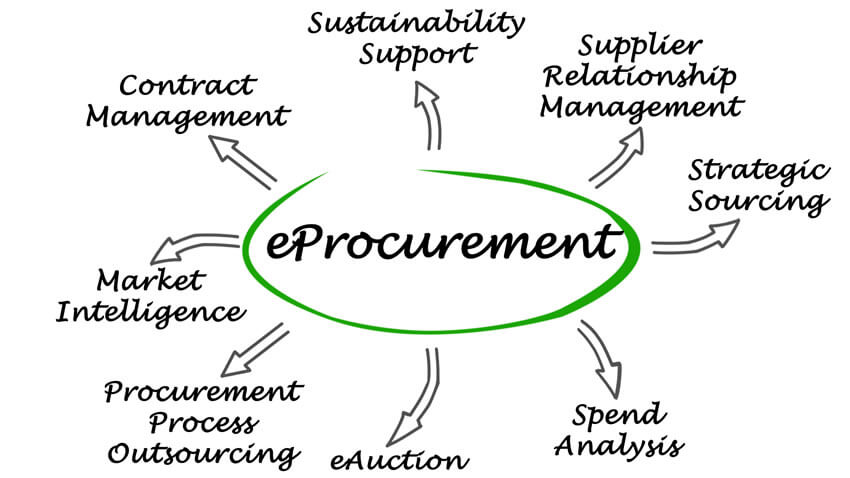Ref No: 1992

Chapter 1: Introduction
1.1 Overview of the Chapter
Impact of Impact of E-Procurement on Supplier Relationship: According to Nelson et al, (2001) purchasing is responsible for the most aspect of organisational spending. Given these preceding comments, the arrival of web-based electronic procurement has been signalled as a “Revolution” based on its potential to mitigate the total cost of acquisition.
In addition to this, it is likely to impact on the nature of supplier governance by strengthening and supporting market based relationships between the suppliers and the organizations concerned.
In view of the above remarks, the introductory chapter of the current research study is based on the analysis of different aspects that are related to setting up a foundation for the current research study.
The aspects to be covered in this chapter include the background of the research along with the development of the problem statement of the research. Furthermore, the chapter also includes the presentation of the research aims and objectives along with questions that will be studied and the discussion in the chapter also involves the analysis of the scope and the significance that the present study has for the relevant concerns.
1.2 Research Background
According to Kim, Suresh and Kocabasoglu-Hillmer (2015), e-procurement refers to the process through which an organization procures or buys goods and services from the vendors through the use of internet. Going forward, e-procurement is largely utilized by organizations that seek to procure or purchase goods and services from suppliers that are either located in foreign countries or locally sourced.
To support this claim, Caniato, Luzzini and Ronchi (2013) emphasize that e-procurement is used by organizations to expedite the development of procuring and obtaining commodities and services to meet production needs faster and with ease.
Judging from the remarks made by Rosenzweig, Laseter, and Roth (2011), various companies and organizations in recent times are fast discovering that e-Procurement is an effective and efficient way to maintain all their supplier’s lists, as it gives the organizations the facility as well as the technology to monitor and control the entire supplier’s process, service levels and the quality of the product.
According to Walker and Brammer (2012) the primary reason leading to the increase in the use of e-procurement by many organizations is the growing use of information technology by businesses particularly to reach out towards their customers in different parts of the globe.
Therefore, considering the growing importance of the aspect of E-procurement, the marketers around the globe have been intent on using this technique to promote their products and services.
Thus, it has been stated by Lalountas, Manolas and Vavouras (2011) that the increasing trend of globalization has also significantly contributed towards businesses in variety of ways.
The implementation of e-Procurement software can make the acquirementprocess swifter and more effective, allowing representatives from a wide range of units to manage the things they need in using a combined and controlled framework.
The organizational wide e-procurement programming facilitates associations to likewise evaluate and to control the spending process. Furthermore, all across the board it can be used to alter with manual-based procurement techniques. The most common E-procurement models that are used by organizations are Activity based modelsuch as Indirect Procurement System (IPS) and Direct Procurement System (DPS) Impact of E-Procurement on Supplier Relationship.
Due to e-procurement, more transparency can be seen in the organization. Not only this, the policy effectiveness is boosted at a very good rate. It is further observed that the rise in participating in information society is seen. In the view of Hsin Chang, Tsai and Hsu (2013) the effective use of e-purchasing have a optimistic impact on the relationship of the organization with its stakeholders and particularly with its suppliers.
It is further stated that the rise in the applications of e-purchasing have transformed the aspects of procurement and the aspects of supplier relationship management. Therefore, it has been suggested by Prajogo and Olhager (2012) that through the use of technological means, organizations can constantly stay in touch with their suppliers and can effectively provide them the information about the products that they desire.
According to Christopher (2016) electronic purchasing also has a momentous effect on supplier relationship and is one of the most sources of competitive advantage. To further support this claim, one of the key aspects of supplier relationship is to maintain effective communication and co-ordination with the organization which is facilitated through the use of e-procurement.
In the view of Zhu, Sarkis, and Lai (2012) development of effective co-ordination with the suppliers is helpful in maintaining long-term relationship and obtaining the desired goods and services without delays and disruptions. According to the findings of Lambert and Schwieterman (2012)management of suppliers’ relationship is a long-run and a continuous process which is primary developed with the view of establishing long-term success.
In the view of Kurnia, Choudrie, Mahbubur and Alzougool (2015) the use of e-procurement has also increased in the retail sector. It is further stated that the use of e-procurement has a good scope in managing the sale and purchases that organizations operating in the retail sector undertake. Sila (2015) have analyzed that extensive use of information technology in the form of e-procurement expedites the flow of transactions in the retail sector.
1.3 Problem Statement
The major problem statement that has been studied is related to identification of the force of e-purchasing on supplier relationship. The study deals with the problem to identifying the extent to which e-procurement is useful for an organization and how does it creates an impact on the suppliers and other stakeholders of the business. However, as the use of e-procurement is still a relatively new and innovative concept; therefore, organizations are still trying to come to terms with the benefits and the complications that are associated with the use of e-procurement….


Recent Comments